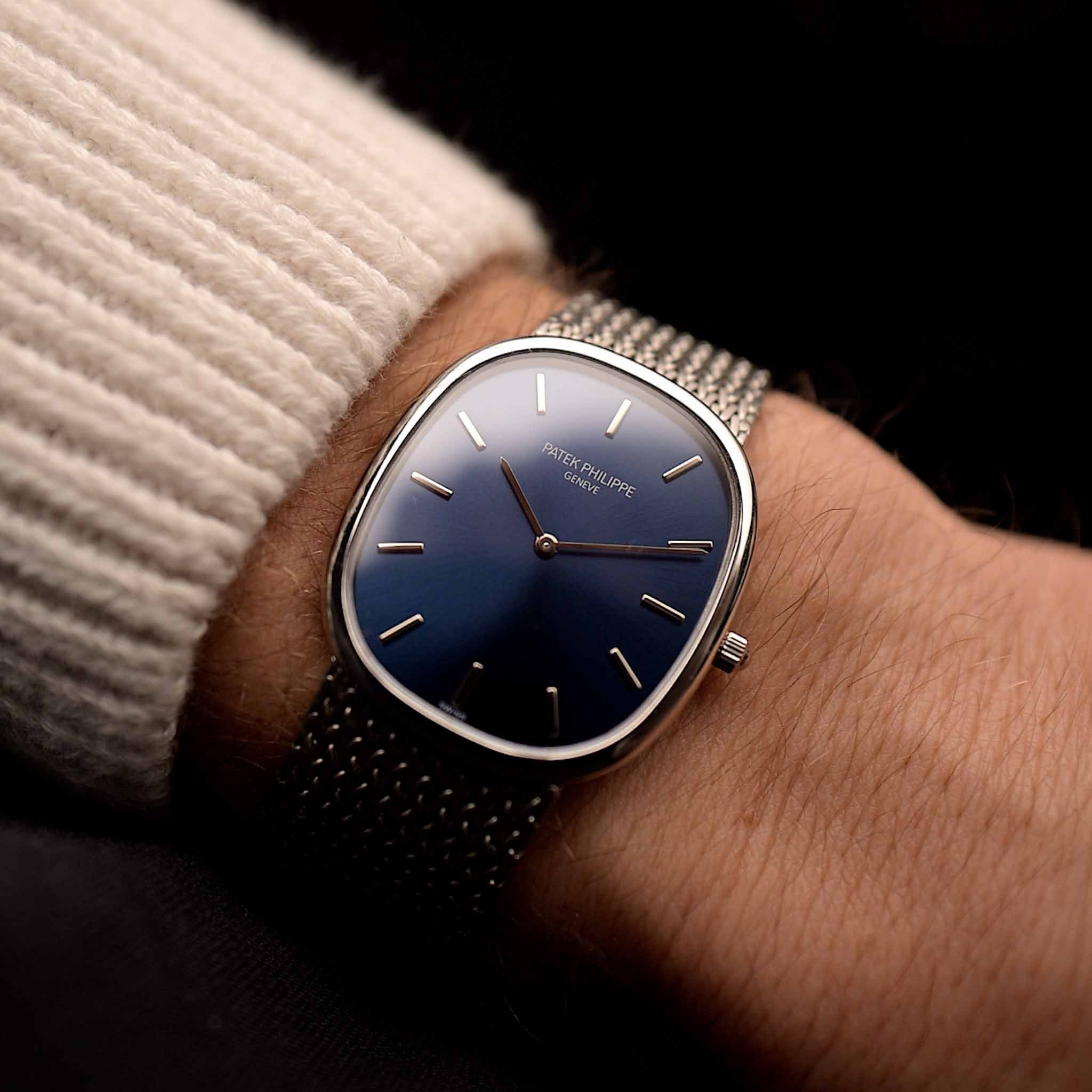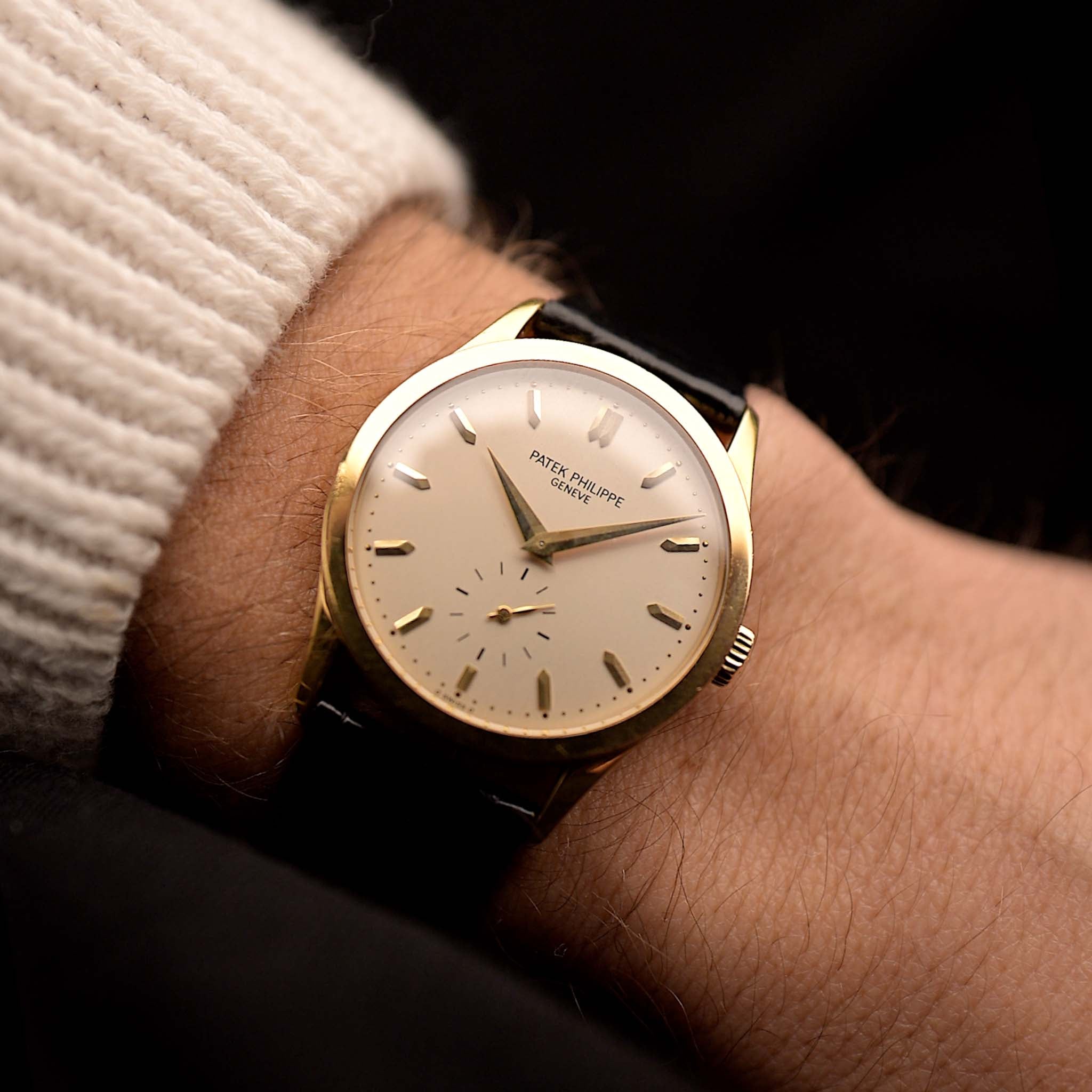If we think about watch archetypes there are dress watches and tool watches. Well, and there's a lot(!) of room in between. The "dress casual" category is what might best describe this in-between area or maybe also "everyday" watches. This group of timepieces can be best described as fitting every occasion and being your favorite take-it-up-and-wear-it timepiece. For me it's elegant yet not too formal and also sturdy yet not a full blown utility piece. But what about the design?
October 11, 2022
The Evolution of the "Everyday Watch" - Part I

Marcus Siems @siemswatches
Collector, Author, Data Analyst
The New Normal When you'd have to choose which watch to wear today... what factors play a role in that decision? We'll likely pick it because we like it, think it fits our style or because it reminds us of past experiences and people. Utility is not really a factor anymore - at least for me. So every watch can be an "everyday watch" now. But that wasn't always the case. There was a time when a watch had an actual utility and complications were used accordingly. So when did the trend of an all-purpose watch develop? How can we even define such pieces?
If we think about watch archetypes there are the elegant dress watches and the sturdy tool watches. Well, and there's a lot(!) of gray zone in between. Something we might typically address as "dress casual" pieces or simply "everyday" watches.
This group of timepieces can be best described as fitting every occasion and being your favorite take-it-up-and-wear-it timepiece. For me it's elegant yet not too formal and also sturdy yet not a full blown utility piece. And (imho) it's purely basic functionality: time only, maybe day and date and no bezel tools. Further, it's probably water-proof and made from steel.
 How can we best define "dress casual"? What makes a watch an "everyday watch"? Photo @goldammer.me
How can we best define "dress casual"? What makes a watch an "everyday watch"? Photo @goldammer.me
That's still a very broad definition and leaves a lot of leeway. Particularly from a design perspective this means that there are numerous degrees of freedom. So let's map those out. Are there design features we can describe and track throughout the history of this versatile blueprint? Is there a common design language or does it change? To answer these questions we'll have a closer look at the quantitative data from the last 80 years[1] to better understand how other epochs interpreted the "everyday watch".
1) Popularity
So how common have been these all-rounders throughout the years? What we see are at least four distinct eras of popularity. Up until the early to mid 1950s these pieces have not been very prevalent. Only about 5% of the watches on the market have been dress casual. That clearly changed from the 1950s to the late 60s when we see an increase to about 25-30% of all watches on the market.
 Figure 1. Distribution of "Dress Casual" watch type popularity between 1940-2000.
Figure 1. Distribution of "Dress Casual" watch type popularity between 1940-2000.
Then there's a cut... Christmas Day 1969 changes everything - for the horological world as a whole - when Seiko introduces their first quartz powered watch, the Astron[2-3]. Interestingly, this leads to a strong increase in popularity of the everyday watches as well. Peak popularity reaches 45% around 1980. It seems it's the time you want your watch to simply work, whenever and wherever.
 Probably the incarnation of a modern style dress casual watch: IWCs Ingenieur 666AD, here with a black dial. Photo @goldammer.me
Probably the incarnation of a modern style dress casual watch: IWCs Ingenieur 666AD, here with a black dial. Photo @goldammer.me
And with the Neo-Vintage era arriving in the late 80s early 90s we also see that watches become more complicated again. It's the Renaissance of the mechanical watch with calendars, moonphases, chronographs and generally very Haute Horologie inspired timepieces made for the masses. As such the dress casual watches decrease again slightly in popularity down to 25%.
2) Brands
Before we dive into the exact design language it's interesting to have a closer look at which brands were most invested in this genre. Is there maybe one that sticks out or do we rather see that certain brands and styles expand into this niche occasionally?
 If we think about the "classic" dress casual watch I guess most of you would definitely have Rolex in the mix. Photo @goldammer.me
If we think about the "classic" dress casual watch I guess most of you would definitely have Rolex in the mix. Photo @goldammer.me
What we indeed see is that the stereotypical "dress casual" piece comes from one well-known manufacturer - Rolex. THE prototype of this genre are the Datejusts and Oyster Perpetuals (and other variant thereof) of any time and age. We see that over one third (38%) of "everyday watches" on the market right now are from Rolex and particularly common from the 1970s onwards.
These pieces are of course of major importance to the genre as a whole yet I believe that part of this popularity is clearly driven by contemporary taste. In other words, as Rolex is in extremely high demand at the moment, also several vintage pieces flood the market and skew the overall distribution of design features towards the brand's schemes and layouts.
 Figure 2. Distribution of dress casual manufacturing watch brands between 1940-2000, excluding Rolex and highlighting the 9 most common manufacturers.
Figure 2. Distribution of dress casual manufacturing watch brands between 1940-2000, excluding Rolex and highlighting the 9 most common manufacturers.
Thus, let's for the sake of this analysis imagine a world without Rolex and focus only on the remaining brands. Interestingly, what's most common between all of the nine most popular brands (beside Rolex) is that they peak in certain eras but don't seem to be fully invested all throughout the last Century.
Let's focus on Omega for a second. It's the second most common brand in this horological category (~20% of all remaining pieces). We see Omega everyday watches being extremely en vogue in the 1950s and 60s with up to 85% of the pieces in the mid 50s. This is a development reflecting the success of the early Seamaster and Constellation collections. But then during the 1980s Omega seems to almost completely vanish from this market. Potentially indicating the the brand is more invested in specialized pieces - for example the Seamaster becomes a full dive-watch.
 It's not only Rolex. Omega too has been introducing several classics to the market. The Seamaster as well as the Constellation collections testify to the brands aim to provide great everyday timepieces. Photo @goldammer.me
It's not only Rolex. Omega too has been introducing several classics to the market. The Seamaster as well as the Constellation collections testify to the brands aim to provide great everyday timepieces. Photo @goldammer.me
That seems to be exactly the time when other brands hit the market and came up with their own idea of what an "all-rounder" watch should look like. Seiko, IWC, Jaeger-LeCoultre, Audemars Piguet and Patek Philippe all introduce several more casual pieces.
The 1970s and early 80s have also been an epoch of industrial design. The Genta classics immediately come to mind but it's the general approach that the industry has been taking on how to approach watch design. So it makes a lot of sense to see the variability of these pieces increase right at the time when the all-rounder is itself as prominent as ever.
 In the beginning I said those pieces are probably in steel... but not exclusively. This stunning Universal Geneve Polerouter Date in Rosegold clearly exceeds the dress watch category. Photo @goldammer.me
In the beginning I said those pieces are probably in steel... but not exclusively. This stunning Universal Geneve Polerouter Date in Rosegold clearly exceeds the dress watch category. Photo @goldammer.me
3) Interim Conclusion
What can we make out of all of this? Well the "everyday watch" clearly is an idea that becomes fashionable with the overall approach the watchmaking industry is taking in any given epoch. It really fits the 1970s and 1980s with its minimalistic yet functional design language.
However, we shall not forget that it is an archetype that is quite common ever since the 1950s. A time when watch utility and the development of specialized sturdy watches began. As such "watch utility" truly is a spectrum; from ultra-thin and golden dressy to all out dive/military/sports watches. So it really took extreme tool watches to become prominent for the dress casual watch to gain traction and fill the entire spectrum.
 Through the years almost all major watch brands have experimented with the dress casual category. With Jaeger-LeCoultre for example you see similar developments in their Memovox, Master Mariner and Futurematic collections. Photo @goldammer.me
Through the years almost all major watch brands have experimented with the dress casual category. With Jaeger-LeCoultre for example you see similar developments in their Memovox, Master Mariner and Futurematic collections. Photo @goldammer.me
Let's not forget the role several brands played in its development. What we define as modern "dress casual" clearly has been influenced by Rolex's core collections all throughout its history - going back probably even to the first Oyster case. And aside from Rolex there's been Omega. Another brand that can't be taken out of the equation. Particularly through their Mid-Century designs Omega invigorated the idea of how a sturdy yet elegant timepiece should look like.
That's of course not all we can say about the "Everyday Watch" design but I'll save the rest for Part II. Want to read the full story on dress casual watches? Here you can find Part I and Part II.
References
[1] ~50,000 Watches from Chrono24, extracted 2020 Nov. 29th and Jan. 6th 2022; Karlsruhe, Germany;
[2] Four Revolutions - Part 1: A Concise History Of The Quartz Revolution; Joe Thompson, Hodinkee;
https://www.hodinkee.com/articles/four-revolutions-quartz-revolution
[3] The Quartz Crisis; Caitlyn Bazemore, Crown & Caliber;
https://blog.crownandcaliber.com/the-quartz-crisis/
All rights on text and graphics reserved to the Author.




























Leave a comment